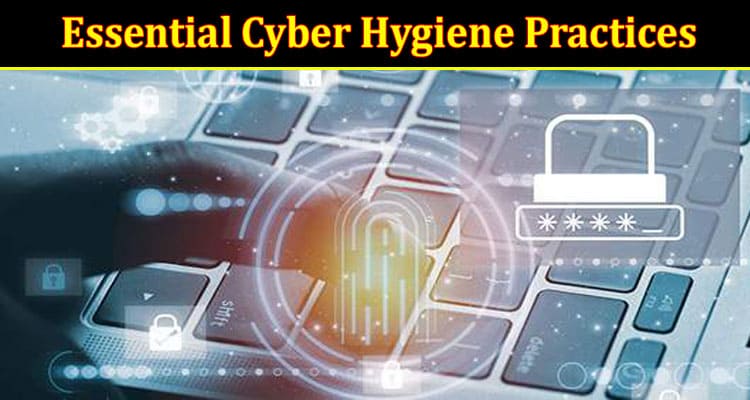Cyber hygiene is an important aspect of digital practice and must be taken seriously. According to CyberGhost’s cyber hygiene guide, cyber hygiene is even more important for organizations. There has been an increase in cyberattacks these days; black hat hackers are taking advantage of the large online integrations by businesses to attack vulnerable online platforms.
Even as the government continues to make its bid to secure cyberspace, there is also something you can do in your small way to complement the efforts of relevant government authorities. That precautionary measure is called the “cyber hygiene practices,” it is a guide created to help online business owners take precautionary steps to ensure that their businesses are safe against all forms of cyberattacks.
Before we delve into detailing these guidelines, it is important to mention that cyberattacks are increasing. Statistically, it has been said that 40-80% of Australian online businesses have been vulnerable to some form of cyberattack in the past year.
The situation is almost the same worldwide, and it is a wake-up call for all businesses with an online presence. Below are some of the best digital/cyber hygiene practices you must note as a business owner with an online presence.
Top 5 Major Cyber Hygiene Practices
- Augmented Cybersecurity Infrastructures
This is very necessary for business owners with vital, sensitive information stored in their databases. People like this must try their best to integrate their system or any other digital equipment into the latest cybersecurity infrastructures.
Most hackers also upgrade their equipment to penetrate more secure firewalls. This is where you need to be proactive: be ahead of your attackers. Upgrade your anti-spyware/antivirus to the latest version, and ensure your firewall is constantly updated. We recommend setting your security features in auto-update mode to avoid being unaware.
- Compliance with Rules
Most governments and multinationals are not relenting in providing businesses with a safer online presence. But before joining this program, you will need to comply with certain rules and regulations. So, compliance with government or cooperation’s rules is also a good cyber hygiene practice that keeps you covered, shading you from external attacks.
- Train Your Staff
This is where you must keep your staff in the know. Get them acquainted with the latest cybersecurity infrastructures and techniques. Let them know what to do in a cyberattack and how to identify it.
This is because these cyber attackers constantly change tactics every time, so as a precaution, you must stay ahead of the game. In summary, the rule of cyber hygiene practices demands that you lecture your staff on the best practices, especially as it involves protecting vital data in the system.
- Save Cost
Statistically, a total of $4.35 million has been lost to a different data breach. Most of these attacks are avoidable had the owners taken precautionary measures as depicted in the cyber hygiene practice guideline.
By investing in those cybersecurity infrastructures, you save for the amount you would have lost due to a data breach. The cost of recovering stolen data might not be a problem for some companies, but the efforts that will go into the recovery process, which, most of the time, is priceless.
- Create a Barrier
This is where you create a limit where clients should stop when they get to. Suppose your business requires that you have a control room somewhere, a database where all computers in the office are connected. In that case, the cyber hygiene practice guideline demands that you place a visible barrier, the one, your clients, must not cross. This is a way to wade off any client with ulterior motives.
Try reading up for more updated, advanced methods to improve your knowledge of cyber hygiene.
Some of the Challenges of Cyber Hygiene Practices
Nothing good comes without some level of challenges. The same goes for the cyber hygiene practice. Below, we have listed some known challenges of sticking to these best practices.
- Limited Resources
Sticking completely to the guideline is expensive on its own, especially when it has to do with buying cybersecurity tools and infrastructures. Most of these advanced tools cost way higher than the business’s income. So most times, these businesses end up using either substandard or no cybersecurity infrastructures.
- It’s Hard Keeping up with the Policy
Complying with the policies is something easier than maintaining it. This happens when there is an update in the guidelines. Cooperation or governments sometimes require that these businesses upgrade to their latest policy to help them checkmate new threats. This upgrade may require that they pay more or adhere to a particular requirement that some may not afford.
- Implementing a Hygiene Policy
One thing is to agree to these cyber hygiene practices; another is to implement them. There are reasons why most businesses can’t afford to implement these policies.
Some may be due to an inexperienced workforce or lack of understanding of such policy. This is why it is always advised that business owners should train their employees to get acquainted with the latest cybersecurity infrastructure trends.
Conclusion
As the world continues to develop new ways to fight cyberattacks and other related cybersecurity challenges, efforts are made to make sure that businesses with online platforms are carried along.
So, to avoid data theft and breaching of the company’s accounts, it is recommended that every business should get involved in building a better, more secure cyberspace.

